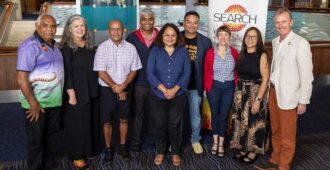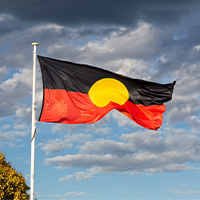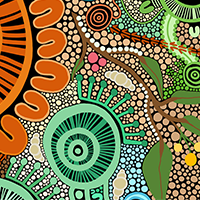
This series showcases the contributions of Sax Institute researchers to papers published in peer-reviewed literature.
What was studied?
Historically, Aboriginal health research has originated from “outside” Aboriginal communities, leaving many Aboriginal people wary of research, and promoting a call for more Aboriginal community involvement and control over health research practices.
This study is the first to describe Aboriginal Community Controlled Health Service (ACCHS) staff perspectives on the access, usage, and potential value of clinical and research data, and to identify potential strategies to maximise the transfer and use of data by Aboriginal ACCHS staff through collaborative research. The research team conducted face-to-face, semi-structured interviews with 35 health professionals from two urban and one regional ACCHS in NSW. Two researchers ‒ including at least one Aboriginal researcher‒ took it in turns to lead each interview. The research was conducted by a team from SEARCH – the Study of Environment on Aboriginal Resilience and Child Health.
What are the key findings?
Six themes emerged from the interviews:
- Occupational engagement: Data was seen as a necessary tool for participants to perform their duties, but not all collected data was seen as relevant.
- Trust and assurance: Some participants were wary of external researches accessing ACCHS data, Some were willing to accept anecdotal and verbal information and participants often trusted data from their own ACCHS more than that from other more distant sources.
- Motivation and empowerment: Participants believed data showcasing positive health gains could help empower their communities and boost ACCHS morale. Data were useful to educate clients about lifestyle risk and promote treatment adherence.
- Building research capacity: The ACCHS’ unique knowledge of the Aboriginal culture and relationship with the local community was believed to enhance data collection from ACCHS clients, but participants believed the data collected was underutilised for research purposes. Lack of time was identified as a major barrier to research training and data use.
- Optimising service provision: Data were seen as crucial to ACCHS maintaining funding, for guiding resource allocation and for future planning.
- Enhancing useability: Participants believed data should be presented clearly and concisely, with visual data (e.g. graphs) seen as the most efficient way to communicate data. Data that were inaccurate and difficult to access caused frustration and reduced productivity.
Participants were willing to learn data handling procedures that could further enhance the delivery of health services and enable more ACCHS-led research. However, busy workloads restricted such opportunities, with a lack of time identified as a major barrier to research training and data use.
What was the conclusion?
The study concluded that strategies such as promoting research partnerships, ensuring greater awareness of positive health data and the purpose of data collection, and communicating data in a user-friendly format were all likely to encourage greater data use, to build research capacity and to improve health services within Aboriginal communities.
The paper
Building better research partnerships by understanding how Aboriginal health communities perceive and use data: a semistructured interview study. BMJ Open 2016;6:e010792. [Internet} DOI: 10.1136/bmjopen-2015-010792
Find out more
- Read more about SEARCH (the Study of Environment on Aboriginal Resilience and Child Health)




